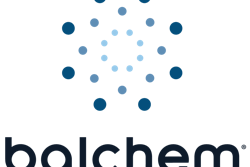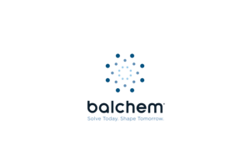
Pet food e-commerce and direct-to-consumer selling. Research on dogs’ and cats’ microbiomes. Social media and brand “polygamy” vs. loyalty. These are just some of the dynamic concepts driving and changing the global pet food market, including in Europe. At Petfood Forum Europe 2019, pet food experts will offer their information and insights on these topics along with a European Union labeling update, sustainable ingredients and packaging, plus new ingredients to help aging pets, pet heart health and pet food processing.
Scheduled for June 13 in Cologne, Germany, this exclusive conference will be co-located with Victam International 2019. Petfood Forum Europe attendees can learn the latest pet food information and research while doing business with other pet food professionals and leading industry suppliers. The conference includes several networking opportunities such as coffee breaks and lunch, as well as tabletop exhibits from supplier companies.
Early bird registration with savings is open, and separate registration for Victam International, scheduled for June 12-14, is free if made online before the show (www.victam.com).
Petfood Forum Europe program and schedule
As of press time:
8:30-9:30 Registration and check-in
9:30-9:40 Welcome
9:40-10:15 Brand loyalty is dead – what killed It and how to put it back on the pet food shelf – Sandy Robins, pet lifestyle expert and author, outlines how and why the pet food marketplace has gotten so crowded and the primary reasons that pet parents brand-hop. She highlights the impact of millennials and generation Z on the pet food aisle and looks at a new, upcoming lifestyle trend: a rotational diet for better health that alternates proteins, recipes and textures. If brand monogamy as we know it is dead, is brand polygamy the new, next best thing?
10:15-10:45 Building a direct-to-consumer business for pet food – Jodi Watson, consultant, offers a call-to-action for pet food companies to transform their businesses and grow in a new way: building a direct-to-consumer (DTC) model. While some pet food companies still operate with the mindset that they can only grow their businesses through retail channels, DTC can help manufacturers garner additional margin, consumer intelligence and learning that enhances their ability to stay current and mitigates risks of Amazon and business trend weaknesses in the pet food retail industry.
10:45-11:15 Coffee break
11:15-11:45 Science from sales and the microbiome: leveraging the direct-to-consumer model to obtain actionable data – Justin Shmalberg, DVM, D.A.C.V.N., chief nutrition officer, and Ryan Honaker, Ph.D., director of microbiology, NomNomNow, describe how a DTC, individualized, fresh pet food subscription service permitted cohort refinement and recruitment for scientific studies with unique, inexpensive and robust data sets. Specific data from dog and cat microbiomes were obtained in one such investigation, which illustrates the potential of this novel approach.
11:45-12:15 The impact of natural omega-3 DHA/EPA sources on pet food sustainability – Jeff Alix, global pet nutrition marketing manager, DSM Nutritional Products, discusses the impact on sustainability of the primary alternatives to fish oil in pet diets. With growth in premium pet foods comes an increase in demand for ingredients that are all-natural, deliver functionality and meet social and environmental responsibilities, including those that provide the omega-3 fatty acids EPA and DHA. Their primary source is fish oil, but industrial fishing has led to overfishing and a loss of biodiversity.
12:15-12:45 Waste production, and reduction, in pet food packaging – Diana C. Tebaldi, quality and HSE project engineer, Mann um Hummel, presents results of a project looking at waste in pet food packaging in Europe and specifically in Germany, suggesting alternatives for minimizing the production of this subdivision of waste through examples implemented in other types of packaging in Germany. She also discusses responsible sourcing, such as choosing suppliers with ISO 14001 certification, as another key to pet food manufacturers’ sustainability and environmental commitments.
12:45-14:00 Buffet lunch
14:00-14:30 Building your pet food brand and tribe: new insights into social media done well – Wendy Shankin-Cohen, president and CEO, Dr. Harvey’s/Healthy Formulations, shares easy-to-implement strategies for successful brand campaigns, giving usable tools to companies to create or improve their social media presence. Customer loyalty is everything today. Learn how to create a tribe of followers by engaging them with effective status entries and hashtags, striking a balance between promotional and non-promotional content and using Facebook, Instagram and Twitter appropriately.
14:30-15:00 How to successfully handle pets’ aging process – Anne Lepoudère, research and development manager, Vivae-Diana Pet Food, shares a study demonstrating how a combination of natural plant-based ingredients can help manage oxidative stress and inflammatory consequences in dogs. The aging process induces numerous metabolic and physiological changes, which have various harmful effects on pets including joint health issues, cognitive decline and immune function alterations. These ingredients may help mitigate those effects.
15:00-15:30 Fish proteins from blue whiting may promote health benefits in pets – Oddrun Gudbrandsen, Ph.D., leader of the dietary protein research group, University of Bergen, presents research on the effects of differently prepared blue whiting proteins on blood pressure in animals (obese rats). All tested blue whiting proteins beneficially affected blood pressure. The results may be applied to development of health-promoting protein ingredients in pet food, possibly reducing the prevalence of obesity and hypertension in pets.
15:30-16:00 Coffee break
16:00-16:30 Did EU regulation on pet food labeling achieve its goals? – Paola Cane, Ph.D., CEO, Mia Solution, reviews European Union (EU) Regulation 767/2009 on pet food labeling, enacted 10 years ago. At the time, manufacturers needed to capitalize on scientific advantages and consumers needed transparent information. The regulation tried to achieve clarity and transparency, simplify technical requirements, remove unnecessary administrative burden, increase competitiveness, encourage innovation and quality-relevant marketing and enable informed purchase choices. Did it succeed?
16:30-17:00 Protected ingredients for better process control in companion animal nutrition – Eric Altom, Ph.D., technical nutritionist, Balchem Corp, explains how to leverage microencapsulation technologies in pet food production to help increase product stability, enable novel processes and improve efficiency. Enhanced nutrient stability through the prevention of premature reactions and degradation with other nutrients and formula components in pet food products helps control dosing and repeatability, impact total delivered costs and deliver new pathways to product development.
Petfood Forum Europe updates
















